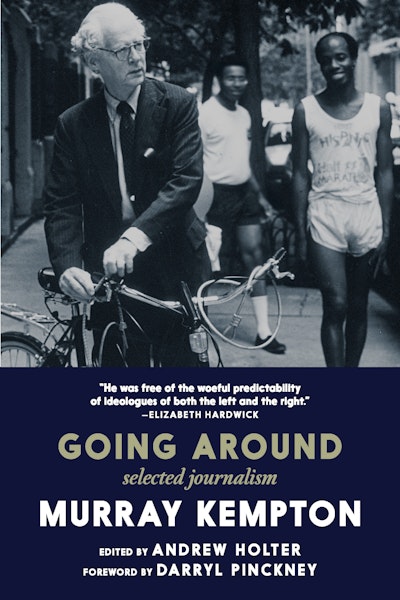- Published: 3 June 2025
- ISBN: 9781644214510
- Imprint: Seven Stories Press
- Format: Paperback
- Pages: 480
- RRP: $59.99
Going Around
Selected Journalism
- Published: 3 June 2025
- ISBN: 9781644214510
- Imprint: Seven Stories Press
- Format: Paperback
- Pages: 480
- RRP: $59.99
“[An] astonishing experience. Reading Kempton. . . all at once in a book, is like watching an endless parade of the great characters of American life. . . Kempton’s sense of the absurd and his ability to sketch a scene in a few sentences, to deflate the pompous in a phrase, make the parade as rich as any great novel.” —David Remnick
“[Kempton is] unmatched in his moral insight into the hypocrisies of politics and their consequences for the poor and powerless.'' —Robert Silvers
“I grew up reading Murray, and the whole idea of him awed me. I had this romantic vision of this guy roaming the precincts and then going into a lonely newspaper office and then walking home on the empty streets having left behind this thing of beauty. I guess mine was the only room at Williams College to subscribe to the Post, and I got it so I could read Kempton.” —John Kifner, a foreign correspondent for the New York Times
“The man has brought more honor to newspapers than anyone in my lifetime.” —Jimmy Breslin, fellow-columnist at Newsday
“I thought my administration was one of the best in the history of New York City, and he didn’t. I found him very unfair. But how can you have ill will toward a saint? He’s Saint Murray.” —Edward Koch, former New York City mayor
“When a newspaper hires a snake like Kempton they can expect the worst. . . . I am surprised that Scripps-Howard are taking on this rat.. . . Kempton has written many columns belittling me and criticizing my administration of the FBI. . . .A real stinker.” —J. Edgar Hoover
“Murray Kempton’s current articles in the New York Post on the Alabama situation are just about the most moving pieces of American reportage I’ve ever read,” —Langston Hughes, written during the Montgomery bus boycott. (Hughes, a columnist himself, urged Simon and Schuster to commission a book from Kempton.)
In 1956, Dr. King wrote Kempton a letter of thanks for columns that “expressed the spirit of the movement,” citing also the “contributions that have come into our office as the result of your articles.”
Alfred Kazin would remember Kempton as “my only radical friend from the 1930’s who never sold out.”



